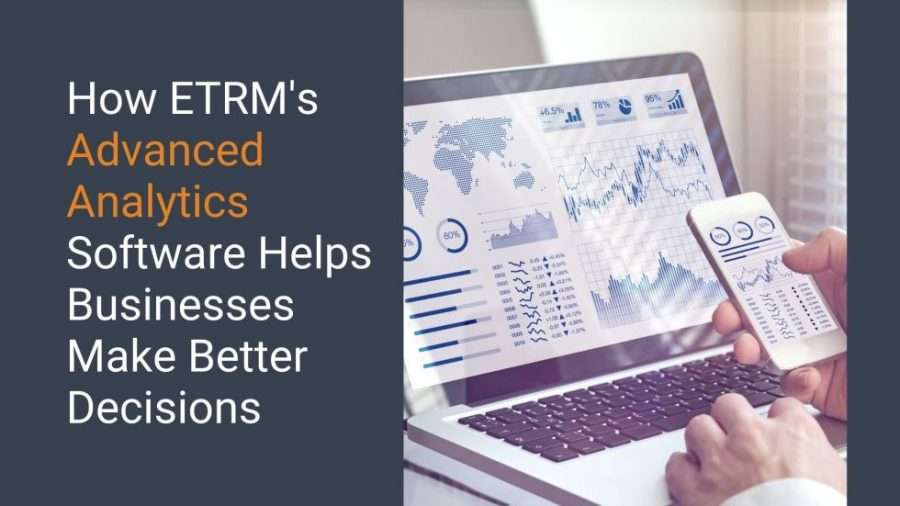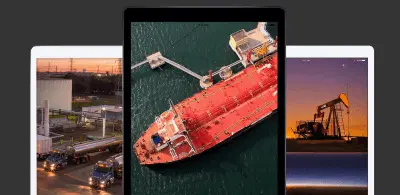How ETRM’s Advanced Analytics Software Helps Businesses Make Better Decisions
- March 8, 2022
- Posted by: Inatech ETRM
- Categories:

If you are into commodity or energy trading, you may have heard a lot about the recent buzzwords—advanced analytics and data visualisation. No doubt, advanced analytics is transforming how traders, risk managers, finance personnel or marketers do trading. Most businesses have adopted smart energy trading and risk management (ETRM) systems that not only do the basic tasks but are equipped with in-built advanced analytics tools that offer a competitive edge.
In this article, we will discuss briefly how advanced analytics is impacting the value ETRMs bring to the business.
What Does an ETRM Do?
ETRM software is a set of applications used by commodity traders, suppliers, risk managers, marketers, or wholesale distributors to streamline and automate operations related to the supply and trading of energy commodities. These may include but are not limited to
- Trading
- Hedging
- Risk management
- Flexible reporting
- Financial accounting and reconciliation
- Scheduling
- Inventory management
ETRM supports front, mid, and back-office staff by eliminating the need for legacy systems and conventional spreadsheets, so the business can utilise their resources in the overall growth strategy.
Impending Transformation—Advanced Analytics
Advanced analytics with data visualisation can enhance the value of the data generated by the ETRM systems. It can provide real-time insights to make fast, confident data-driven decisions that can impact the profitability of businesses in a highly volatile yet regulated energy market. This means you make the sense of your own valuable data and eliminate the scope of human bias and errors while increasing your trading margins.
The increasing power of advanced analytics can be primarily attributed to the ever-growing size of market data including price variations, vessel tracking, weather data, taxations; new talent equipped with machine learning and statistical algorithms skills; and cloud computing that relies on predictive analytics to identify market triggers and signals.
Experts believe that an effective analytics transformation in trading will comprise
- Utilising successful use cases as early success will help the organisation to have a positive mindset towards analytics
- Self-financing the transformation
- Defining business value for use cases and setting performance expectations—as a business you need to capture the value and not just invest in IT infrastructure or data enrichment
- Recruiting new talent with different trader profiles that bring in value in terms of digitalisation and analytics.
ETRMs and Advanced Analytics
Let us now briefly understand the real-world application of advanced analytics in the ETRM software.
- Trading: Traders deal in a highly volatile market that is continually evolving. This means they need to quickly access different data feeds and also determine how these data feeds will have an impact on each other. Secondly, after identifying the data, the system should respond rapidly to provide analytical insights to help them make decisions. For instance, energy or power traders should make swift decisions to maintain a competitive edge as markets move quickly by minutes. That is why the ETRM’s advanced analytics should have ease of access and responsiveness.
- Risk management: Visibility and control over real-time positions, help businesses hedge profitably in changing markets. Additionally, risk managers, traders, and finance personnel can utilise accurate forecasts of long-term positions to make effective contract decisions that are not only compliant but also increase margins.
- Accounting: For businesses dealing with a high number of transactions, visualisation of data flow from bill of ladings (BOL) to invoicing allows the scheduling team to work proactively.
- Finance and operations: Useful insights from operational and accounting data can help the management to help understand the factors that have historically affected the bottom line and will do so in the future. This can help make better decisions related to planning, budgeting, and forecasting to help achieve efficiency.
- Scheduling: Businesses need to move beyond run-down reports and access personalised dashboards to accurately identify inventory issues. This means integrating your inventory with price feeds, lifting trends as well as movements to identify the pain points.
Thus, with the right tools and governance, businesses can utilise the power of advanced analytics to accelerate their growth.
Inatech’s Techoil, a real-time, true cloud-based ETRM for traders, risk managers, marketers, and finance personnel is built on modern architecture and equipped with advanced analytics to help you make the right, data-driven decisions. Its suite of advanced analytics tools including what-if scenarios, portfolio analysis, and value at risk (VaR) models can offer you the much needed competitive edge in energy markets. To know more visit Techoil




